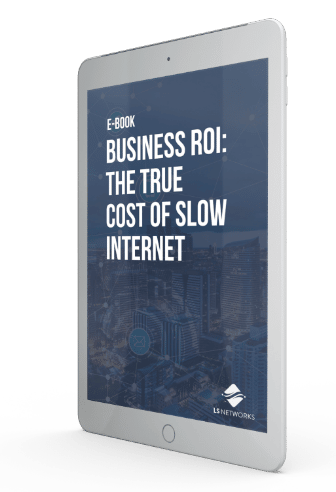A nearly $1 trillion bipartisan infrastructure bill was passed in November, and much of that funding is earmarked for the Pacific Northwest – including money to expand broadband access.
The bill allocates funding to a number of areas, including universal schooling, expanded medicare, free community college, and efforts against climate change. Our attention is on the $65 billion set aside for broadband access, with the specific goal of improving internet services in rural areas.
What does the broadband infrastructure bill mean for the future of internet access in the Pacific Northwest? Let’s find out.
Funding Breakdown for Broadband
At least $100 million is reserved for each state in the United States. Local governments will be able to choose how to allocate this funding for their communities, but the bill includes a $14.2 billion subsidy that’s intended to go directly to qualified, low-income users as part of the Affordable Connectivity Fund, which gives qualifying households a $30 discount on broadband services.
Here’s how some of the broadband funding is broken down:
- $2.75 billion for the Digital Equity Act. These funds are meant to stimulate programs such as digital literacy for seniors.
- $2 billion is allocated toward United States Department of Agriculture rural broadband programs.
- $2 billion is earmarked for Tribal broadband.
- $1 billion is set aside for middle-mile connections. The intent is to build a high-speed backbone for underserved communities and the businesses and anchor institutions in those areas.
- $600 million is geared toward tax exempt Private Activity Bonds (PABs).
Existing Funding Programs for Broadband Access
The broadband infrastructure bill’s $65 billion isn’t the only funding available to meet the needs of underserved communities. Roughly $35 billion of funding already exists in current programs, though it’s anticipated twice as much will be spent on broadband as a result of the new bill.
Existing programs can be organized into four groups:
- FCC, including programs that range from the E-Rate Program for schools and libraries through the COVID-19 Telehealth Program
- NTIA, including the Connecting Minorities Program, the Broadband Infrastructure Program, and the Tribal Connectivity Grant Program
- Rural Utilities Service, including programs ranging from the Rural Broadband Access Loan Program through the Distance Learning and Telemedicine Grant Program
- Treasury Department, which covers two different coronavirus-related funds
These categories were taken into consideration when congress was determining how best to disperse new funds. None of the existing funding will be reduced, and many existing programs are scheduled to receive additional funding as a result of the bill.
The Impact on Broadband
The infrastructure bill includes a number of provisions related to internet access.
Transparency
The broadband infrastructure bill requires clear, easy-to-understand pricing so consumers aren’t surprised or confused by anything on their bills. Uniform labeling will be similar to what we see on nutrition labels, with the goal of simplifying the decision making process for internet buyers.
Permanent Discounts
ISPs will have to apply Affordable Connectivity Fund discounts to any internet plan eligible consumers want to sign up for. With discounts becoming permanent, users no longer face the concern of their chosen plans becoming unaffordable when the initial discount expires.
State Funding
With at least $100 million reserved for each state, this portion of the funding has the most potential to impact connectivity in the Pacific Northwest. The funds are intended to go toward unserved and underserved areas – in direct alignment with our focus at LS Networks.
Lower-Cost Options
ISPs that receive federal grant money will have to offer lower-cost service to eligible households, making broadband more accessible to consumers.
The Digital Equity Act
The $2.75 billion in funding dedicated to the Digital Equity Act will help states – including those in the Pacific Northwest – develop and execute plans to ensure equal access to the internet for underserved communities. Funding can go toward digital literacy programs, WiFi hotspots, and other initiatives that help to close the digital divide.
Putting a Stop to Digital Redlining
Digital redlining is a practice where ISPs choose not to build or offer access to areas that aren’t likely to create profits. The FCC will establish a definition for equal broadband access in order to prevent discriminatory practices.
How the Pacific Northwest Will Benefit
All states, including Oregon and Washington, will receive benefits from the infrastructure bill that improve roads and bridges, create sustainable transportation options, facilitate use of electric vehicles, ensure clean drinking water, and improve airports – in addition to expanding broadband access.
In Washington, 8.5% of residents live in rural communities where there is currently no broadband infrastructure – and 8.8% of residents don’t have an internet subscription.1 The infrastructure bill gives Washington at least $100 million in funding to expand broadband access across the state – including to the 241,000 Washingtonians who don’t have it. The Affordable Connectivity Benefit will also enable 19% of residents to afford internet access.
In Oregon, 11% of households do not have an internet subscription, and 3.2% of residents live in areas that lack broadband infrastructure.2 Even where infrastructure is available, broadband
may be too expensive to be within reach. The state will also receive a minimum of $100 million to help expand broadband access to roughly 136,600 residents who have gone without it. 23% of Oregonians are eligible for the Affordability Connectivity Benefit.
LS Networks’ Efforts to Expand Access
For over 15 years, LS Networks has provided high-speed fiber connectivity to businesses, government entities, healthcare organizations, education institutions, and other enterprises in the Pacific Northwest. The broadband infrastructure bill will help support our mission to provide access to rural and underserved areas. To learn more about the bill or our built-for-the-Northwest network, reach out to LS Networks today.
Sources:




